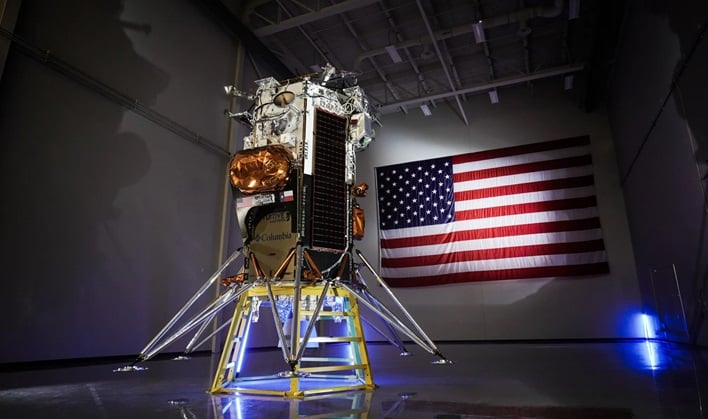SpaceX Grounds Moon Mission Over A Fuel Issue, New Launch Date Announced
Intuitive Machines’ Nova-C class lunar lander, named Odysseus, is slated to launch aboard SpaceX’s Falcon 9 rocket from Kennedy Space Center in Florida. The IM-1 mission was scheduled to launch at 12:57am this morning, but SpaceX tweeted ahead of the launch that it was delaying it due to “off-nominal methane temperatures prior to stepping into methane load.”
According to Intuitive Machines’, the lander is equipped with “state-of-the-art equipment,” including a propulsion system that is powered by a mix of liquid oxygen and liquid methane. The primary mission is to deliver a “variety of payloads” to the Moon’s south pole region. The south pole region is an area of the Moon that remains mostly unexplored.

This is the second attempt by a company, in cooperation with NASA, to attempt a lunar landing this year. The first was Astrobotics’s failed attempt to land its Peregrine lander in January. Peregrine Mission One ran into an anomaly shortly after launch that prevented the team from being able to achieve a stable-sun pointing orientation. The spacecraft later burned up as it reentered Earth’s atmosphere over the Indian Ocean.
The importance of the IM-1 mission is said to go beyond simply landing Odysseus on the lunar surface. Intuitive Machines remarked that the “IM-1 mission is part of a broader strategy to foster a sustainable presence on the Moon, facilitating scientific discovery, resource utilization, and the the development of lunar infrastructure.” The company added, “Moreover, the IM-1 mission’s success will lay the groundwork for a burgeoning lunar economy, opening new possibilities for research, commerce, and exploration.”
If successful, the lunar lander will soft land on the lunar surface near Malapert A, a satellite crater of Malapert, in the Moon’s south pole region. Intuitive Machines says the area around the landing site is believed to be made of lunar highland material, which is said to be similar to Apollo 16’s landing site.
Before any of that can happen, however, SpaceX’s Falcon 9 rocket must launch the payload successfully into a lunar transfer orbit. SpaceX has targeted its new launch window at 1:05am on February 15, 2024.


